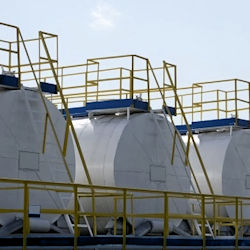Definitions
Permit-Required Confined Spaces (PRCS)
Some confined spaces may require a permit to enter. By definition, a permit-required confined space (PRCS) is a space that meets the 3 criteria for a confined space and has one or more of the following characteristics:
- It contains or has the potential to contain a hazardous atmosphere;
- It contains a material with the potential to engulf someone who enters the space;
- It has an internal configuration that might cause an entrant to be trapped or asphyxiated by inwardly converging walls or by a floor that slopes downward and tapers to a smaller cross section; or
- It contains any other recognized serious safety or health hazards.
Entry into a permit-required confined space requires a written permit and specific safety procedures to be followed, including ventilation, personal protective equipment, communication, and rescue procedures.
Permit-required confined space (permit space) means a confined space that has one or more of the following characteristics:
- Contains or has a potential to contain a hazardous atmosphere;
- Contains a material that has the potential for engulfing an entrant;
- Has an internal configuration such that an entrant could be trapped or asphyxiated by inwardly converging walls or by a floor which slopes downward and tapers to a smaller cross-section; or
- Contains any other recognized serious safety or health hazard.
Examples of Confined Spaces that Could Become Permit Spaces
Most confined spaces are designed to hold substances such as liquids, gases, and loose materials, or to house equipment. They come in many sizes and shapes, though most can be classified in one of two ways: those with depth and open tops and those with narrow openings. Below are examples of each.
Condenser Pits: Below-grade pit areas may contain toxic fumes, gases, oxygen-deficient atmospheres when purging with argon, freon, and other inert gases. Also, workers may drop equipment, tools, and materials into the pit.
Manholes: Manholes provide access to confined spaces such as sewers and tunnels. They could be a dangerous traps into which the worker could fall. Often covers are removed and not replaced, or else they are not provided in the first place.
Pipe Assemblies: Inside large pipes, workers may be faced with oxygen-deficient atmospheres caused by purging or welding fumes. Other workers outside the pipe at may subject the worker to toxic atmospheres.
Ventilation Ducts: Oxygen deficiency could exist. Difficult entry and exit and which also make it difficult for workers to communicate. Electrical shock hazards and heat stress are other common problems.
Tanks: Oxygen-deficient atmospheres, along with toxic and explosive atmospheres created by the substances stored in the tanks, present hazards to workers. Heat, another problem in tanks, may cause heat exhaustion. The hazard of electrical shock is always present. Workers must often climb ladders to reach high places on the walls of the tank.
Sumps: Workers entering sumps may encounter an oxygen-deficient atmosphere. Also, electrical shock hazards are present when power tools are used inside. Inadequate lighting may create an accident.
Containment Cavities: These large below-grade areas are characterized by little or no air movement. Ventilation is always a problem. In addition, the possibility of oxygen deficiency exists. Welding and other gases may easily collect in these area.
Electrical Transformers: Transformers often contain a nitrogen purge or dry air. They must be well vented by having air pumped in. Testing for oxygen deficiency and for toxic atmospheres is mandatory.
Knowledge Check Choose the best answer for the question.
1-2. Which of the following is one of the four additional criteria for a permit-required confined space (PRCS)?
You forgot to answer the question!

